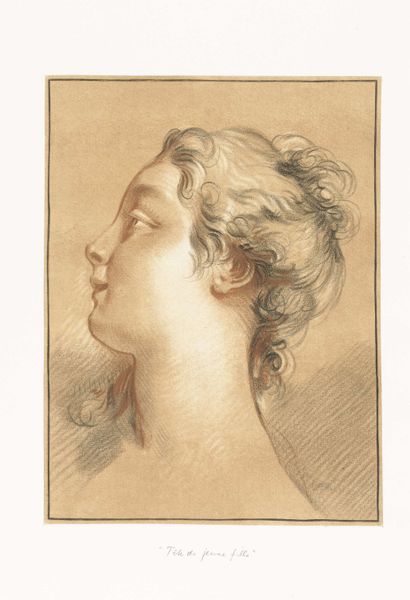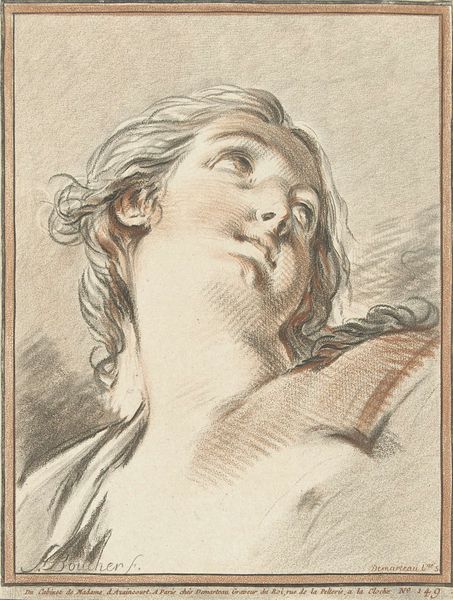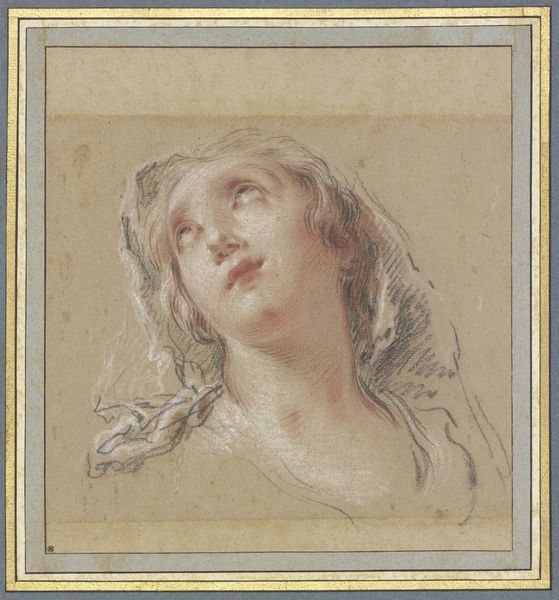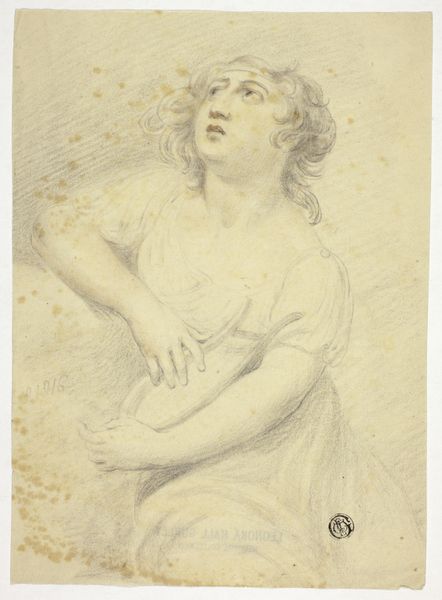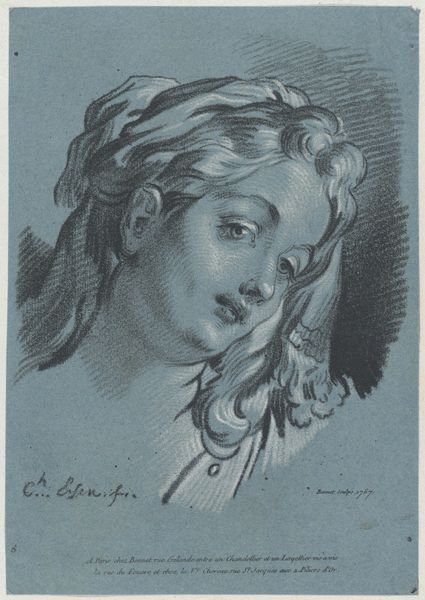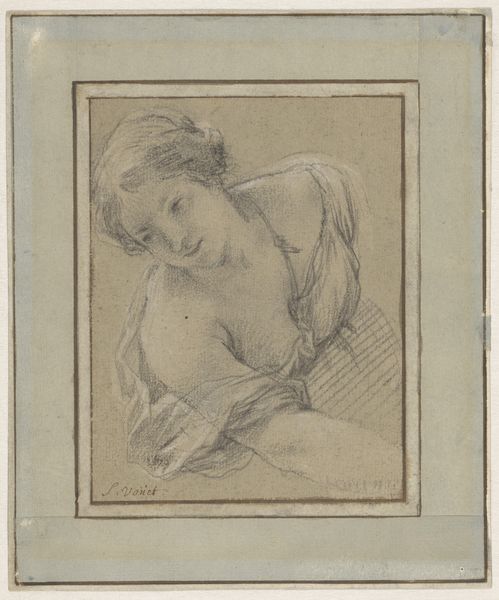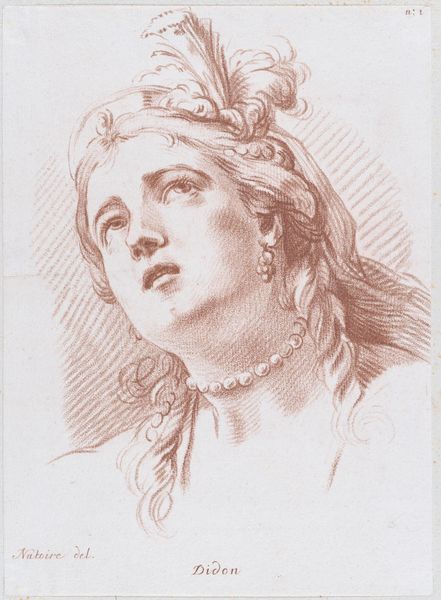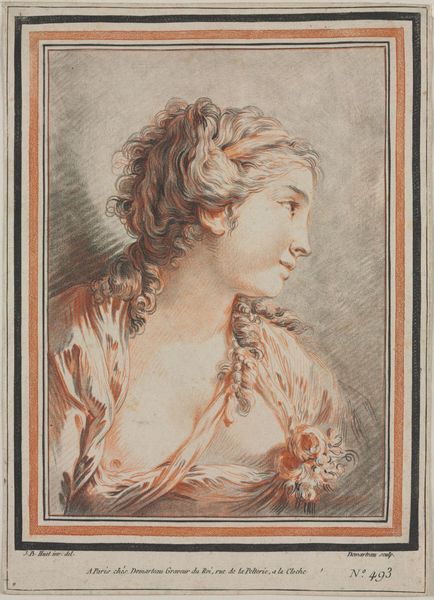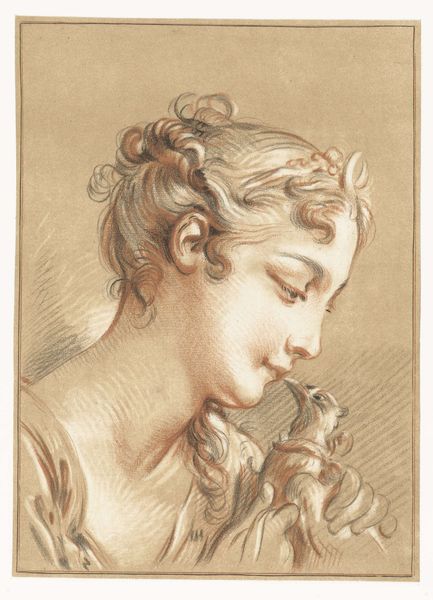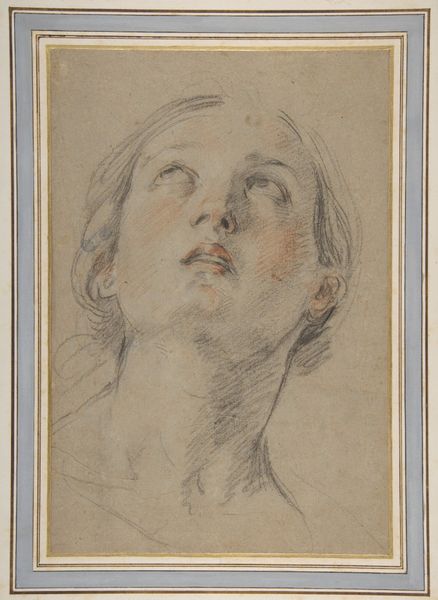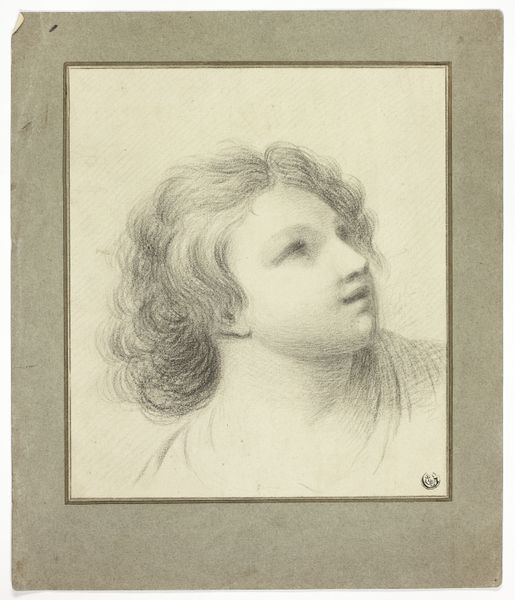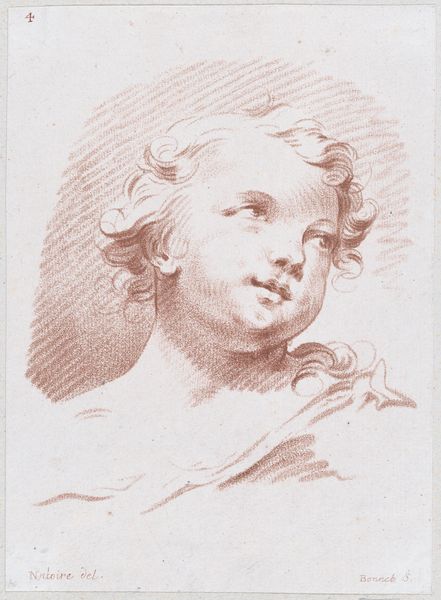
drawing, print, paper, pen, engraving
#
portrait
#
drawing
#
facial expression drawing
# print
#
charcoal drawing
#
paper
#
portrait reference
#
portrait head and shoulder
#
france
#
animal drawing portrait
#
pen
#
portrait drawing
#
facial study
#
facial portrait
#
engraving
#
portrait art
#
fine art portrait
#
rococo
Dimensions: 217 × 165 mm (sheet; cut within plate)
Copyright: Public Domain
Curator: Welcome, everyone. I'd like to draw your attention to "Head of a Woman," a print by Gilles Demarteau, circa 1767. It's currently part of the collection at the Art Institute of Chicago. Editor: My first thought? She seems lost in thought, like she's glimpsed something beautiful just beyond the frame. A wistful yearning, maybe? The soft colors add to that feeling. Curator: Absolutely. Demarteau was known for his engraving technique, often imitating the effect of chalk or pastel drawings, a popular style in the Rococo period. This work reflects the fascination with representing female beauty prevalent at the French court, but also the inherent power dynamics within the artist-model relationship and broader societal expectations surrounding women's roles. Editor: The way the light catches her face makes it seem like she's illuminated from within. You know, like those moments when you feel truly seen. Makes me wonder what she's dreaming about. Love, revolution, pastry... Who knows? Curator: It is interesting to speculate on the inner life represented. We can think about representations of women during this time in art and reflect critically about what those images often elided: the political, social, and economic constraints placed upon women and consider intersectional factors such as class, race, and religion. These omissions were crucial in maintaining power structures. Editor: Exactly, it's so much more than just a pretty picture, isn't it? The detail, like the little wisps of hair escaping her elaborate updo, it hints at a real person beneath the aristocratic presentation, resisting the rigid roles you were talking about. Curator: It’s a tension that reflects broader social changes occurring at the time, especially ideas coming out of the Enlightenment. Editor: I am moved by the intimacy, like a private conversation frozen in time. That’s why, when I see it, I feel a connection. Curator: Hopefully our brief analysis has invited you to develop your own connection with this historical artwork. Editor: A quiet but resonant reminder of the complexities behind beauty and power, I think. Enjoy the rest of your tour!
Comments
No comments
Be the first to comment and join the conversation on the ultimate creative platform.
